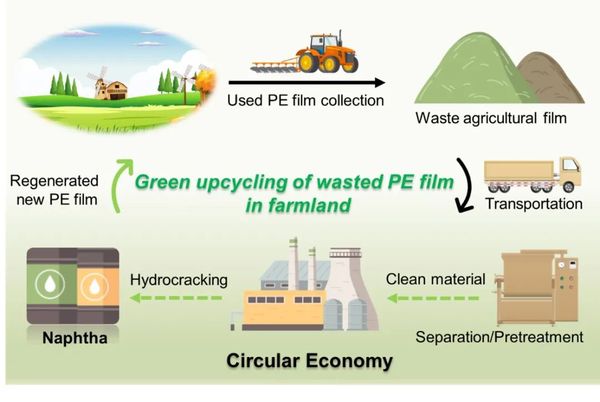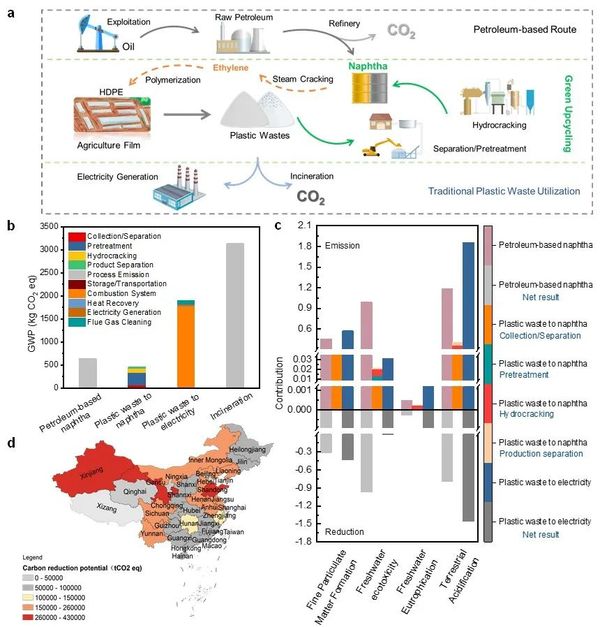Shanghai Advanced Institute has made new progress in the research of upgrading and recycling of waste plastics.
The rapid increase in global plastic waste has led to serious environmental pollution and resource waste. Currently, products obtained from physical recycling have low value, while chemical recycling, as a method capable of achieving the conversion of waste plastics into renewable energy, has gained wide attention. Based on this, a research team led by Researcher Wang Hui and Senior Engineer Luo Hu from the Shanghai Advanced Research Institute of the Chinese Academy of Sciences proposed the upgrading and utilization of waste plastics to produce naphtha, which is then converted into ethylene monomers through steam cracking, establishing a recycling and closed-loop utilization system for waste polyethylene plastics (J. Am. Chem. Soc., 2023). Furthermore, they designed a non-precious metal Ni-based catalyst to achieve selective hydrogen cracking of real waste plastics to produce naphtha. The research results were published in the flagship journal of the Chinese Chemical Society, CCS Chemistry, under the title "Green Upcycling of Waste Agricultural Plastic Film under Mild Conditions."

Figure 1 Green upgrading recycling and circular utilization of abandoned polyethylene plastic.

Figure 2 Sustainability Assessment of Upgrading Waste Plastics
This research work is supported by multiple projects, including the National Natural Science Foundation, the Shanghai Low Carbon Technology Innovation Functional Platform, and the Zhejiang Provincial Engineering Center for Lipid-Soluble Vitamins.
【Copyright and Disclaimer】The above information is collected and organized by PlastMatch. The copyright belongs to the original author. This article is reprinted for the purpose of providing more information, and it does not imply that PlastMatch endorses the views expressed in the article or guarantees its accuracy. If there are any errors in the source attribution or if your legitimate rights have been infringed, please contact us, and we will promptly correct or remove the content. If other media, websites, or individuals use the aforementioned content, they must clearly indicate the original source and origin of the work and assume legal responsibility on their own.
Most Popular
-

List Released! Mexico Announces 50% Tariff On 1,371 China Product Categories
-

Nissan Cuts Production of New Leaf EV in Half Due to Battery Shortage
-

New Breakthrough in Domestic Adiponitrile! Observing the Rise of China's Nylon Industry Chain from Tianchen Qixiang's Production
-

Dow, Wanhua, Huntsman Intensively Raise Prices! Who Controls the Global MDI Prices?
-

Mexico officially imposes tariffs on 1,400 chinese products, with rates up to 50%






